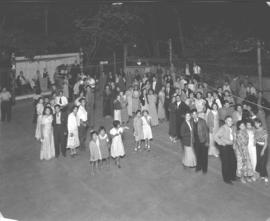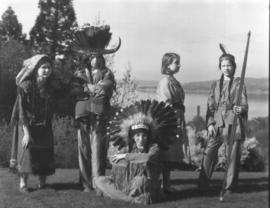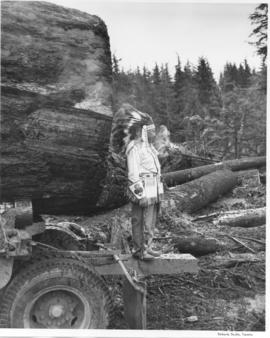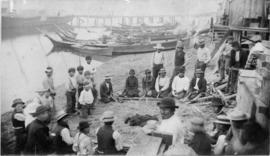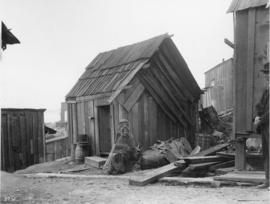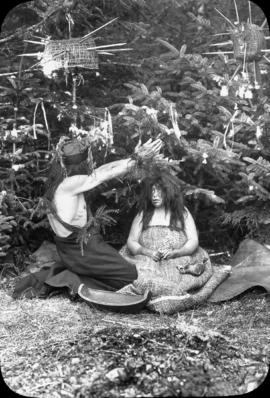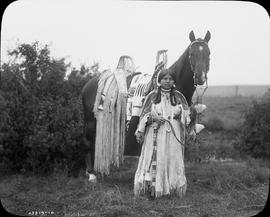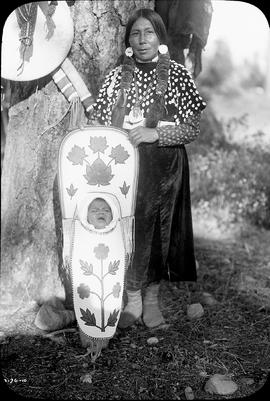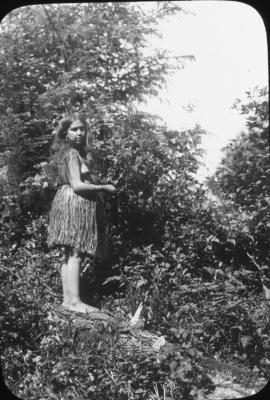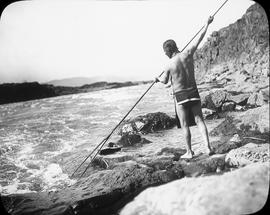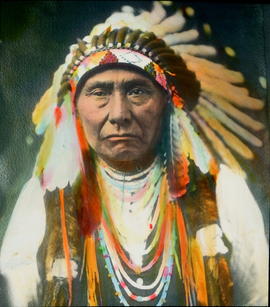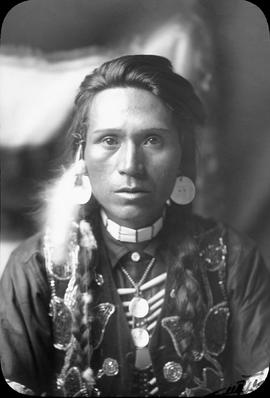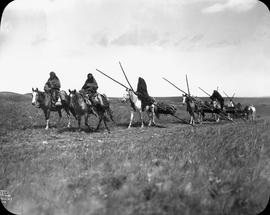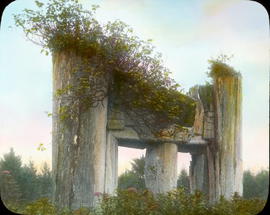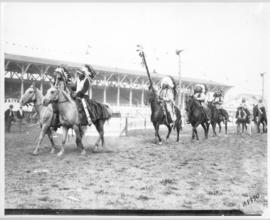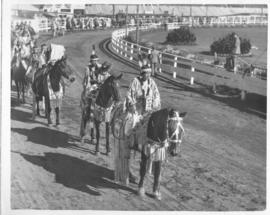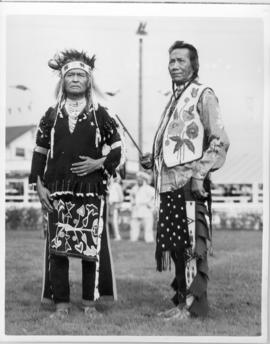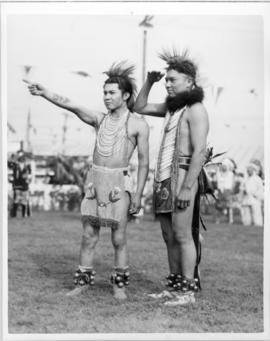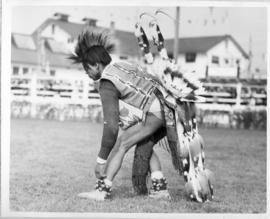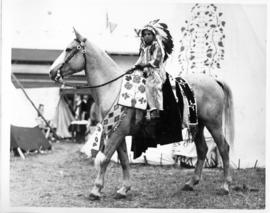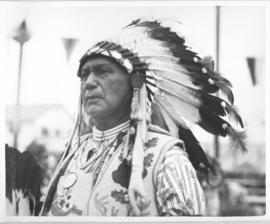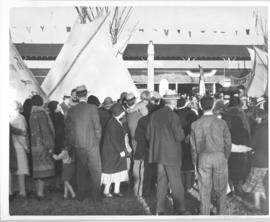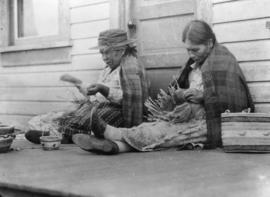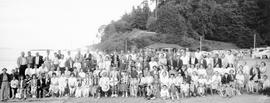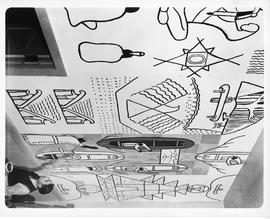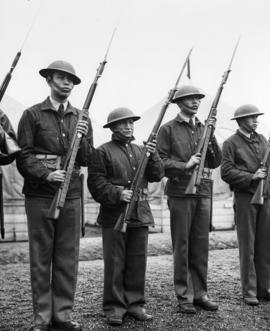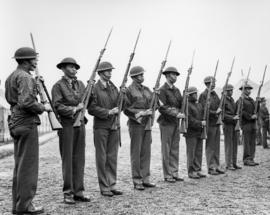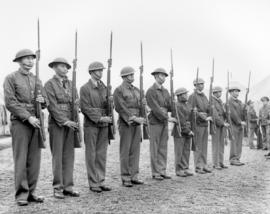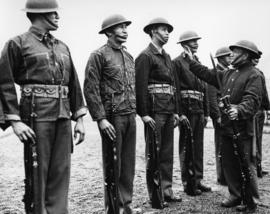- Item
- 1934-08
Part of Richards Studio Photographs
Young native Americans dance to the rhythm of hot jazz at the annual gathering for the harvesting of the hop crop in Puyallup Valley. Audoma Park, 2 miles from Puyallup, has been reserved by its owner A. E. Applegate as a meeting place for the tribes. A dance floor has been set up for the younger tribesmen. A large group of men, women and children assemble on an outdoor concrete floor. Wires are strung from poles across the floor to hold a center light. A group of four musicians plays music from a sheltered wooden stage. Each year many of the tribes of Washington and British Columbia gathered in the Puyallup Valley at harvest time to pick crops and socialize with other tribes. (T. Times 8/30/1934, pg. 1)
Indians of North America--Social life; Migrant agricultural laborers--Puyallup--1930-1940; Migrant laborers--1930-1940; Hops; Dance floors--Puyallup--1930-1940; Dance parties;
